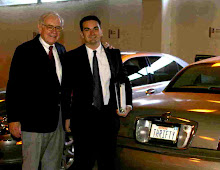Graco, Inc.
The company makes equipment used in fluid handling. This means such things as paint sprayers, newsprint ink transfer systems and the tool that injects Hershey’s kisses with caramel. Management boasts that Graco equipment is used on products all around us. For instance, CEO David Roberts points out that anyone who has had their home professionally painted likely had Graco products used. Anything that needs to be "glued, sealed, painted, or finished" will probably involve the use of a Graco product.
When I request an investor packet from a company’s investor relations department, I always consider it a good sign when included with the materials is a ten or fifteen-year summary of the company’s financials. It is usually only the companies with long, impressive histories of growth that will voluntarily provide such information. This is just what happened recently when I sent off for Graco’s materials.
Generally manufacturing firms like this are relatively less appealing as they ordinarily require high levels of capital investment. The machinery and equipment used to make its products are usually expensive. Fortunately, Graco is strong enough to easily finance its capital expenditures internally, and even end up with cash left over for expansion and distribution to shareholders. This translates in to a balance sheet with no debt yet a return on equity that has averaged well over 40% over the last ten years. With no debt, its return on invested capital is not much less, and since a mere 15%-30% of this return is spent in the form of capital expenditures, this company is clearly creating value a rapid rate. But then again it has been for many years.
What attracts me to the company today is that it looks beaten down. The 1-year chart below shows just when this happened, in mid-July of last year. This coincides with the company's acquisition of Lubriquip, Inc. from IDEX Corp (IEX). Unfortunately the terms of the Lubriquip acqusition were not released so it is difficult to assess if the company overpaid. The stock price reaction seems to indicate that at least a sizable fraction of investors think so.

What we do know about Lubriquip is the following. Its 2005 sales were approximately $30 million. It is less profitable than the rest of Graco, as the company, in its 2006 8-K, directly attributes a 0.3% drop in operating margin to the Lubriquip acquisition. There were no other major acquisitions in 2006 yet the goodwill account increased by about $15 million, and most importantly "acquisitions of businesses, net of cash acquired" amounted to $30.6 million. Also coincidental is Graco's $25 million credit agreement with US Bank, announced the day before the acquisition. Given all this information, I surmise that Graco probably paid about $30-$35 million for Lubriquip.
So, was this too much? Well IDEX tends to trade at less than 0.5 times revenue, while Graco (with its superior profitability) trades at near 4 times revenue. Regardless, the acquisition is not all that significant to a $3 billion company. Nonetheless Graco lost over $605 million in market value around the time of the acqusition. So unless the market sees the acquistion as indicative of poor managerial decision making that might ultimately cause the firm to flounder, I can only assume that this was a terrific overreaction. The stock fell from $46 to $37 in July but has only regained about half of the loss since.
It will be very interesting to read the 2006 Annual Report and see what the company has to say. There is plenty more analysis to be done on this company, but so far things are looking good from my perspective.
I welcome any comments or insight.

